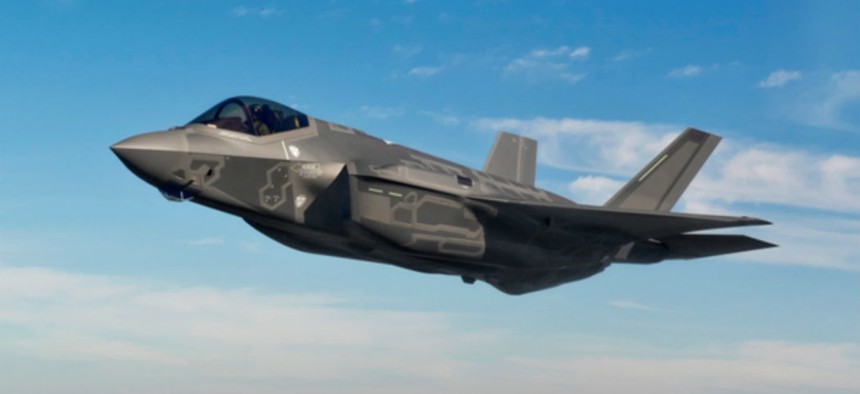Air Force adjusts pilot practices while waiting for hypoxia explanation
No “root cause” determined for F-35A pilot hypoxia symptoms, but pilot precautions are being implemented, according to the Air Force.
After an 11-day flying hiatus, the F-35A pilots stationed at Luke Air Force Base, Arizona are back in the air. Although officials have yet to find the cause of the hypoxia-like symptoms that grounded the aircraft in the first place.
“Right now, we don’t know,” said Col. Patrick Ryder, Chief of the Current Operations Division of Air Force Public Affairs, speaking to reporters June 23. “There has been no root cause determined. In the five cases involving Luke [AFB], there was no common denominator.”
However, one new step that has been taken, according to Col. Ryder, is that pilots must now report any “physiological events” through the operational report system, rather than the medical report system, as in the past. Flying has also resumed, but with heightened focus on pilot and ground procedures.
A F-35A pilot will also now be given more training for understanding physiological incidents, and will be given the choice of wearing a sensor during flight to collect human performance data for investigators, reported officials at Luke AFB.
The pilots who suffered from hypoxia-like symptoms likely reported difficulty breathing accompanied by numbness, tingling, and chest pressure. Hypoxia symptoms can also include feelings of euphoria or anxiety, according to an Army Aviation Flight Surgeon.
In all five cases, the pilots were able to land safely using their aircraft’s backup oxygen system, reports the Air Force press release.
“Since April 2, 2011 through today there have been 15 reported F-35A in flight physiological events, but five of those were between May 2nd and June 8th,” reported Col. Ryder on Wednesday. “When it became clear that there were five in this five to six-week period…the wing commander said ‘okay let’s go ahead and pause flying, take a look, let’s talk to the pilots, let’s see if there’s some commonalities here and then we will reassess.’”
Maintenance and aircrew flight equipment handling have both been eliminated as potential causes, said officials of the 56th Fight Wing at Luke AFB. However, investigators appear to have made little other progress toward finding a root cause.
“The Joint Program Office is leading the study,” said Col. Ryder. “They’ve got engineers, they’ve got medical specialists, they’ve got members of Lockheed, and the Air Force Lifecycle Management Center, all working together to look at the issue,” he explained.
Despite the hypoxia concerns and elusive explanation, a new batch of F-35As were just delivered to the Nellis Air Force Base Weapons Training School in Nevada, reported Col. Ryder, and the first class of pilots will begin training in January.





